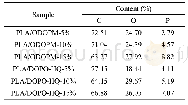《Table 2 Statistical table of SEM and EDS data of Fe-Ti oxide minerals of samples 060, P1, E1 from i
 提示:宽带有限、当前游客访问压缩模式
提示:宽带有限、当前游客访问压缩模式
本系列图表出处文件名:随高清版一同展现
《"Provenance Study of Fe–Ti Oxide Minerals in the Quaternary Sediments in Yichang Area and Its Implication of Formation Time of the Yangtze Three Gorges, China"》
In Fig.2 and Table 2,Fe–Ti oxide minerals obtained from the Emeishan basalt are considered to be mainly homogeneous,with some inclusions and nearly noexsolution texture.Fe–Ti oxide minerals from the Huangling granite are mostly homogeneous,with no inclusions or exsolution texture,whereas Fe–Ti oxide minerals from the Panzhihua vanadium titanomagnetite depict the exsolution textures.In the Fe–Ti oxide minerals of samples 015 and 017,the texture is observed to be homogeneous,with occasional exsolution features and some inclusions(Fig.2;Table 3&4).The backscatter images in Fig.3 depict that the Fe–Ti oxide minerals in samples 021,024,025,and YC02 mainly comprise homogeneous texture and inclusions and that the exsolution textures are observed to be common.In particular,exsolution textures are irregular patterns in samples 017,021,but both of irregular and lattice patterns can be observied in samples 024,025,and YC02.Fe–Ti oxide minerals with homogeneous textures usually are well-formed crystals.However,Fe–Ti oxide minerals with exsolution textures and inclusions are observed to be typically xenomorphic and sub-rounded.
| 图表编号 | XD0017179000 严禁用于非法目的 |
|---|---|
| 绘制时间 | 2018.08.01 |
| 作者 | XIANG Fang、DU Wen、HUANG Henxu、KANG Dongya、ZHU Hongbo、FENG Qin |
| 绘制单位 | State Key Laboratory of Oil and Gas reservoir Geology and exploitation, Chengdu University of Technology、Shangdong Provincial Key Laboratory of Depositional Mineralization & Sedimentary Mineral, Shangdong University of Science and Technology、Institute of |
| 更多格式 | 高清、无水印(增值服务) |
查看“Table 2 Statistical table of SEM and EDS data of Fe-Ti oxide minerals of samples 060, P1, E1 from igneous rocks”的人还看了
-

- Table 5 Statistical characteristics of marginal net income data under different chemical fertilizer productivity of whea





